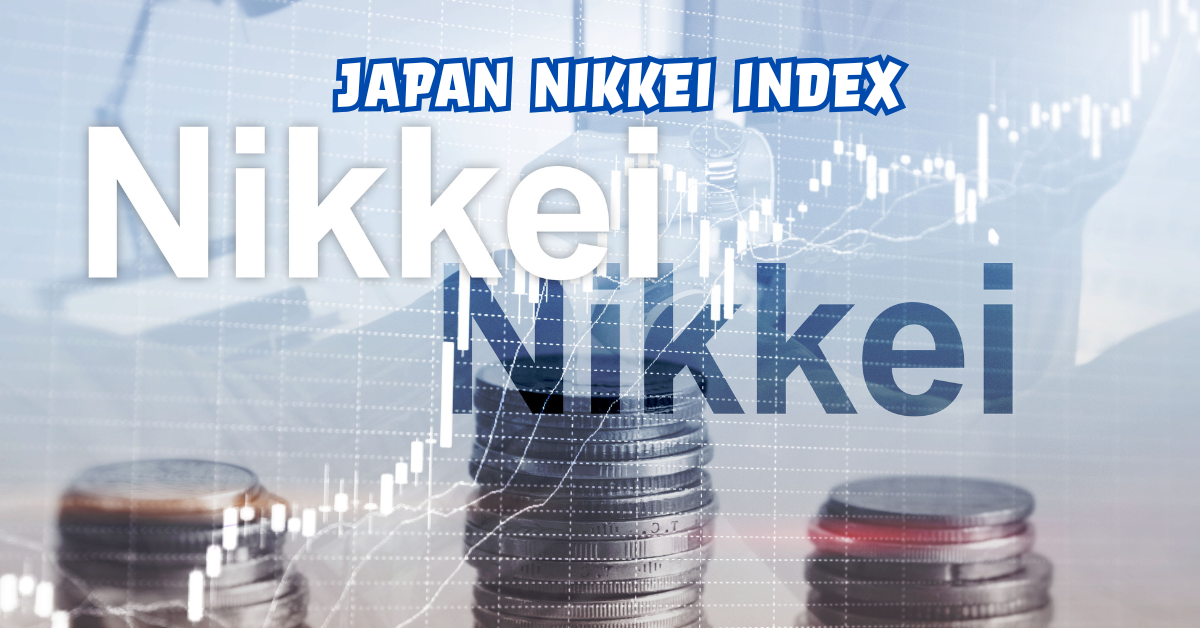In the first hundred words: The Japan Nikkei Index (most commonly the Nikkei 225) stands as a pivotal gauge of Japanese market sentiment and a bellwether for Asia-Pacific equities. Investors and analysts look to it for signals on economic health, corporate earnings, and global capital flows. In this article, we explore what the Nikkei is, how it’s calculated, its historical trajectory, current drivers, investment mechanisms, and risks, equipping you with the informative foundation to interpret its movements and use it in your decision-making.
日本 (Nihon) is often at the center of global financial conversation, and the Nikkei index embodies that presence. Below is a structured examination—rich with fresh insights, relevant metrics, illustrative tables, and expert perspectives—delving into why the Nikkei remains indispensable to market watchers. You’ll come away with clarity about how this index operates, what factors push it up and down, how one can access it as an investor, and what challenges lurk ahead. Toward the end, we answer key FAQs to round out your grasp of this defining Japanese benchmark.
What Is the Nikkei Index? Origins, Purpose, and Structure
The Nikkei Index, most frequently referring to the Nikkei 225, is Japan’s premier stock market benchmark. It is curated by Nikkei Inc., the publishing house behind the Nihon Keizai Shimbun (Japan Economic Newspaper), which incrementally assumed responsibility for the index’s calculation. Over time it became a cornerstone metric for Japan’s equity markets in both domestic and international contexts.
Historical Foundations
The Nikkei 225 traces its roots to postwar Japan: its retroactive estimation begins from May 16, 1949. The official launch date is September 7, 1950. Over decades, it has recorded Japan’s dramatic economic surges and long cycles of stagnation and renewal. Through the bubble economy of the 1980s, the subsequent “Lost Decades,” and more recent structural reforms, the Nikkei has remained a mirror to Japan’s financial evolution.
Composition and Methodology
The index comprises 225 leading companies listed on the Prime Market of the Tokyo Stock Exchange. Unlike market-capitalization–weighted indices (e.g. many global indices), the Nikkei 225 is a price-weighted index. That means each firm’s influence on the index is proportional to its share price—not its market value. Thus, higher-priced stocks carry more weight than cheaper ones, regardless of company size. Nikkei Indexes+2Quantified Strategies+2
Annually, the constituents are reviewed (typically in September), where additions or removals are made to reflect evolving liquidity, industry representation, and corporate governance standards. Corporate Finance Institute+2Nikkei Indexes+2
Purpose and Uses
- Barometer of market sentiment: The Nikkei 225 is often the first stop for markets seeking to interpret investor confidence or fear in Japan.
- Benchmark for funds and derivatives: Many ETFs, mutual funds, futures, and structured products reference the Nikkei.
- Comparative tool: Analysts compare its performance with global indices, such as the S&P 500 or KOSPI, to understand cross-market correlations.
Key Metrics, Trends, and Recent Data
To appreciate the Nikkei’s significance today, we examine its recent behavior, macro linkages, volatility, and technical indicators.
Snapshot Metrics
| Metric | Value / Range | Observations |
|---|---|---|
| Recent Level | ~ 47,900 JPY (as of October 2025) Trading Economics+2Investing.com+2 | The index has climbed significantly over the past year, breaking new records. |
| Year-on-Year Growth | ~ 20–25% increase Trading Economics+1 | Reflects strong investor appetite despite macro uncertainties. |
| 52-Week Range | Lowest ~ 30,792.74, Highest ~ 48,527.33 Investing.com Canada+1 | Indicates wide swings and deep correction potential. |
| Volatility Metric | Empirical historical volatility rising | Researchers have applied advanced volatility models like realized EGARCH to forecast Nikkei volatility better. arXiv |
Macroeconomic Drivers
Japan’s macro environment—GDP growth, inflation, interest rates, yen exchange rate—exerts profound influence on the Nikkei:
- Monetary Policy and Interest Rates: The Bank of Japan (BOJ) has pursued ultra-loose policies for years; any hint of tightening can provoke sharp market reactions.
- Fiscal Stimulus: Japan’s public debt is among the highest globally, but government stimulus and infrastructure spending can lift corporate earnings and investor confidence.
- Yen Depreciation / Appreciation: A weak yen benefits exporters, improving domestic earnings; a strong yen can drag equity performance.
- Global Sentiment & Capital Flows: Because Japanese equities are heavily held by foreign investors, global risk appetite, US rate moves, and capital rotations matter deeply.
Technical Patterns and Trends
Geeks of charts will note:
- Support and Resistance Bands: The index often finds support zones near prior consolidation levels and faces resistance where institutional sell orders cluster.
- Moving Averages: The 50-day and 200-day moving averages are watched as potential trend shifts.
- Relative Strength Index (RSI) and Momentum: Overbought or oversold signals frequently align with sudden reversals.
Analysts use these tools alongside macro fundamentals to anticipate short-term fluctuation windows. Investing.com+1
Historical Phases: From Bubble to Resurgence
To understand where the Nikkei might go, it’s instructive to consider its past journeys. Japan’s equity history is cyclical, dramatic, and lessons-rich.
The 1980s Bubble and Collapse
In the late 1980s, Japan experienced an exuberant real estate and equity bubble. The Nikkei soared past 38,957 (or even 39,000) before the collapse in early 1990s. That bubble’s burst ushered in 30+ years of economic stagnation, often referred to as the Lost Decades. Wikipedia+2TIOmarkets+2
The Lost Decades & Structural Headwinds
Following the collapse, deflationary pressures, weak banking systems, an aging population, and sluggish domestic demand suppressed sustained rebound. The Nikkei languished for years, often trapped below key psychological levels. Wikipedia+1
Revival Cycles and Recent Surge
In the 2010s and 2020s, Japan tried renewed stimulus and structural reforms (e.g. Abenomics). Until recently, equity recovery was gradual. In 2025, the Nikkei broke record highs above 48,000 JPY, riding a wave of fiscal optimism, foreign inflows, and strong corporate profits. Reuters+2Financial Times+2
One analyst put it sharply:
“Markets are reexamining Japan not as a laggard, but as a potential growth frontier in Asia.”
The comeback is far from unanimous, but the momentum is real.
Why Investors Care: Significance and Implications
For active and strategic investors alike, following the Nikkei index can yield advantages beyond mere curiosity. Here’s why it matters:
A Window Into Japan’s Economy
Because the Nikkei aggregates the performance of 225 flagship firms, its upward or downward trajectory often correlates with broader GDP trends, consumer demand, and corporate health. It is used by economists to assess cyclical turns in Japan.
Asset Allocation & Portfolio Diversification
Global investors often diversify into Japanese equities for geographic balance. The Nikkei is central to that allocation—especially through ETFs or index-linked instruments.
Cross-Market Correlation and Sentiment
Movements in the Nikkei can influence or reflect trends in Asian and global markets. A strong Nikkei may fuel confidence in Asian growth, whereas a reversal may signal risk off globally.
Indicator for Policy Shifts
Monetary or fiscal policy moves in Japan often respond to stock market stress or overheating. Thus, sharp moves in the Nikkei can precede shifts in BOJ or government tone.
Derivatives and Structured Products
Futures, options, and structured notes often reference the Nikkei, making it an integral element of hedging or speculative strategies. Investing.com+1
How to Invest or Gain Exposure to the Nikkei
You can’t directly “buy” the index itself—but there are multiple routes to gain exposure or participate in its movement.
| Instrument Type | Description | Advantages | Caveats / Risks |
|---|---|---|---|
| ETFs / Index Funds | Funds tracking the Nikkei 225 or related indices | Simplicity, diversification, lower cost | Tracking error, currency risk |
| Futures / Options | Derivative contracts on Nikkei futures | Leverage, liquidity, hedging | Margin risk, volatility, expiration effects |
| Total Return Swaps / CFDs | Over-the-counter structures replicating returns | Access in markets without direct listing | Counterparty risk, regulatory constraints |
| Individual Stocks | Buying major constituents (Toyota, SoftBank, etc.) | Direct equity ownership, dividends | Lack of full index exposure, individual stock risk |
| Index-linked Bonds / Structured Products | Bonds whose payoffs depend on index performance | Combines fixed income and equity exposure | Complexity, embedded fees, downside exposure |
When picking your path, be mindful of currency risk (JPY vs your base currency), transaction costs, liquidity, and tax treatment in your jurisdiction.
Recent Developments Driving the Nikkei in 2025
Below are a few of the most compelling recent catalysts shaping the Nikkei’s trajectory in 2025.
Political Transition & Pro-Stimulus Signals
In October 2025, election dynamics spurred investor optimism about renewed stimulus. The choice of a pro-growth leader signaled intention toward fiscal expansion and dovish monetary stance, prompting a 4–5% intra-day surge in the Nikkei. Reuters+2Financial Times+2
Earnings Overperformance in Key Sectors
Technology, semiconductors, robotics, and defense industries in Japan have shown strong earnings growth, buoyed by global demand in AI, automation, and security infrastructure.
Yen Weakness & Export Leverage
A weakening yen made Japanese exports more competitive, lifting corporate profits for export-heavy firms, which in turn influenced the index upward. However, currency swings also introduce volatility and capital flow reversals.
External Shocks & Global Rate Trends
Expectations about US interest rate cuts, sudden shifts in global liquidity, or emerging crises abroad can either encourage capital inflows to Japan or provoke rapid outflows. The Nikkei is sensitive to these external tides.
Volatility & Sentiment Reversals
Models such as realized EGARCH have shown enhanced ability to forecast Nikkei volatility using high-frequency data. Sudden volatility spikes often foreshadow structural reversals. arXiv
One interviewee noted:
“The Nikkei in 2025 behaves less like a sleepy domestic index and more like an Asian frontier asset—sensitive, fast, and globally tethered.”
Risks, Limitations, and Criticisms
While compelling, the Nikkei is not without its critics and potential pitfalls. Here are salient risks to bear in mind:
Price-Weighted Bias
Because weight depends on share price rather than market capitalization, the index can be skewed by high-priced stocks that may lack proportionate economic weight.
Concentration Risk
Although comprising 225 firms, a small number of large contributors can disproportionately affect performance. If a high-priced firm suffers, it drags the index.
Foreign Investor Flows
The index is heavily influenced by international capital flows. Sudden capital flight or sentiment reversal abroad can pound the Nikkei even when domestic fundamentals stay stable.
Currency Risk
For non-JPY investors, gains can be diluted or reversed by unfavorable shifts in yen exchange rates.
Policy Shocks and Debt Burden
Japan’s elevated public debt and demographic headwinds limit long-term fiscal flexibility. A misstep in policy or loss of market confidence could provoke sharp correction.
Volatility Regimes
Sudden regime shifts, e.g., triggered by global macro shocks, can lead to rapid drawdowns that technical models may mispredict.
An investor once remarked:
“The Nikkei is like a precision instrument: it rewards nimbleness but punishes overconfidence.”
Two Illustrative Tables
Below are two tables to help you grasp sectoral composition and year-on-year movements more tangibly.
Table 1: Selected Top Nikkei 225 Constituents and Weights
| Rank | Company | Sector | Approx. Weight | Key Driver |
|---|---|---|---|---|
| 1 | Fast Retailing | Retail / Apparel | ~11 % | Global brand strength, e-commerce |
| 2 | Tokyo Electron | Semiconductors | ~9.4 % | AI and chip demand |
| 3 | Advantest | Semiconductor equipment | ~4.7 % | Testing demand, automation |
| 4 | SoftBank | Telecom / Holdings | ~4.5 % | Investments, tech holdings |
| 5 | Shin-Etsu Chemical | Chemicals | ~2.7 % | Specialty materials, chips |
(Weights approximate, based on publicly reported data) Wikipedia+2TIOmarkets+2
Table 2: Year-on-Year Nikkei 225 Performance Snapshot
| Period | Start Level | End Level | % Change | Notes / Drivers |
|---|---|---|---|---|
| Oct 2024 → Oct 2025 | ~38,800 | ~47,900 | +23 % | Stimulus hopes + strong earnings |
| Jan 2025 low → Oct 2025 high | ~31,000 | ~48,500 | +56 % | Reversal from earlier volatility |
| 52-week low → high | ~30,792 | ~48,527 | +58 % | Deep drawdown then strong rally |
These tables capture the outsized swings and driver concentrations inherent in the Nikkei.
How to Interpret Nikkei Movements as a Reader or Investor
- Breakouts and Pullbacks: A sustained breakout above prior highs may indicate bullish continuation; a failure to hold support signals risk.
- Sector Lags and Leads: Watch which sectors (e.g. tech, industrial, defense) are leading—rotations often precede broader turn.
- Volatility Clustering: Clustered volatility may precede trend shifts.
- Foreign Flow Data: Funds entering or exiting Japan is a powerful signal often preceding index moves.
- Policy Announcements: BoJ statements, bond yield shifts, or government stimulus are key triggers.
Always integrate technical signals with macro context; the Nikkei is reactive to both internal and external shocks.
Conclusion
The Japan Nikkei Index is more than just a number—it is a dynamic symbol of Japan’s economic vitality, investor confidence, and global financial interconnectedness. While its price-weighted mechanics and concentration biases demand caution, its responsiveness to corporate earnings, policy shifts, and capital flows make it a critical instrument for portfolio allocation and macro insight.
In 2025, we see a resurgent Nikkei: record highs, bold policy expectations, and deep volatility. Its trajectory underscores the tension between opportunity and fragility. For global investors, mastery of its mechanics, exposure channels, and risk vectors is essential.
As one strategist aptly said:
“You don’t own the Nikkei—you dance with it.”
Let that metaphor guide your engagement: remain alert, adaptive, and ever aware of the currents beneath the surface.
FAQs
1. What is the main difference between the Nikkei 225 and TOPIX?
The Nikkei 225 is price-weighted (each stock’s weight is based on its share price), while TOPIX is market-capitalization-weighted and covers the broader universe of TSE First Section stocks. Thus, TOPIX often gives a more accurate reflection of overall market capitalization, while Nikkei emphasizes high-price stocks. Wikipedia+2Nikkei Indexes+2
2. Can I invest directly in the Nikkei 225?
No—you can’t own the index itself. But you can gain exposure via ETFs, futures, index-linked products, or by owning constituent stocks. These instruments replicate or approximate the index’s performance.
3. Why does the Nikkei sometimes diverge sharply from Japan’s GDP or economic fundamentals?
Because the index is disproportionately influenced by large, export-oriented firms and foreign capital flows, it can decouple from the broader economy, especially when global sentiment, currency swings, or speculative flows dominate.
4. How often is the Nikkei 225’s composition reviewed?
Typically annually (usually in September), companies are added or removed based on criteria like liquidity, governance, and sector balance to ensure the index remains representative. Nikkei Indexes+2Corporate Finance Institute+2
5. What models or tools are used to forecast its volatility?
Researchers use advanced time-series models like realized EGARCH (Exponential GARCH) that incorporate high-frequency measures such as realized variance and realized range-based volatility. These models have shown superior predictive performance over standard GARCH in forecasting Nikkei volatility.











